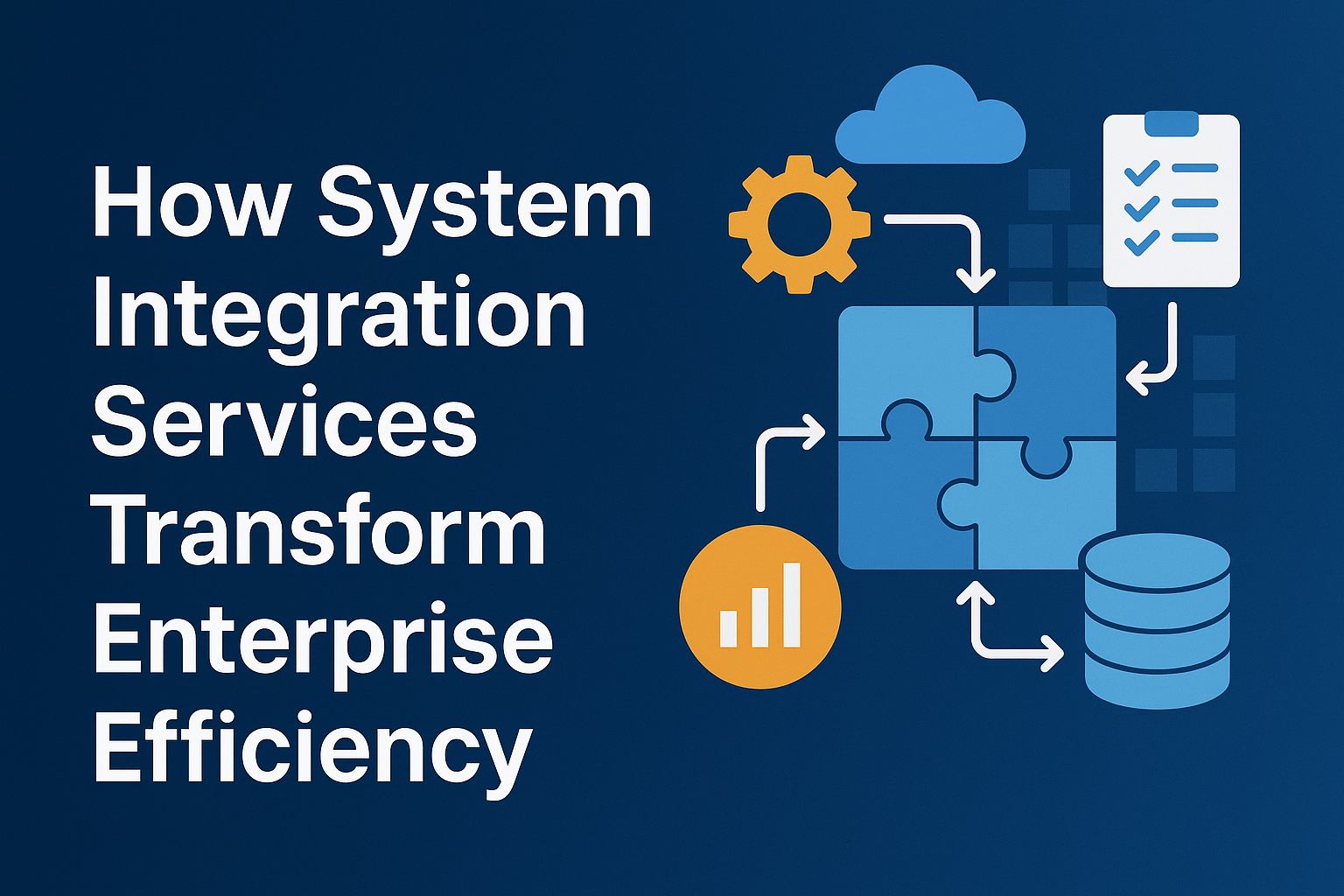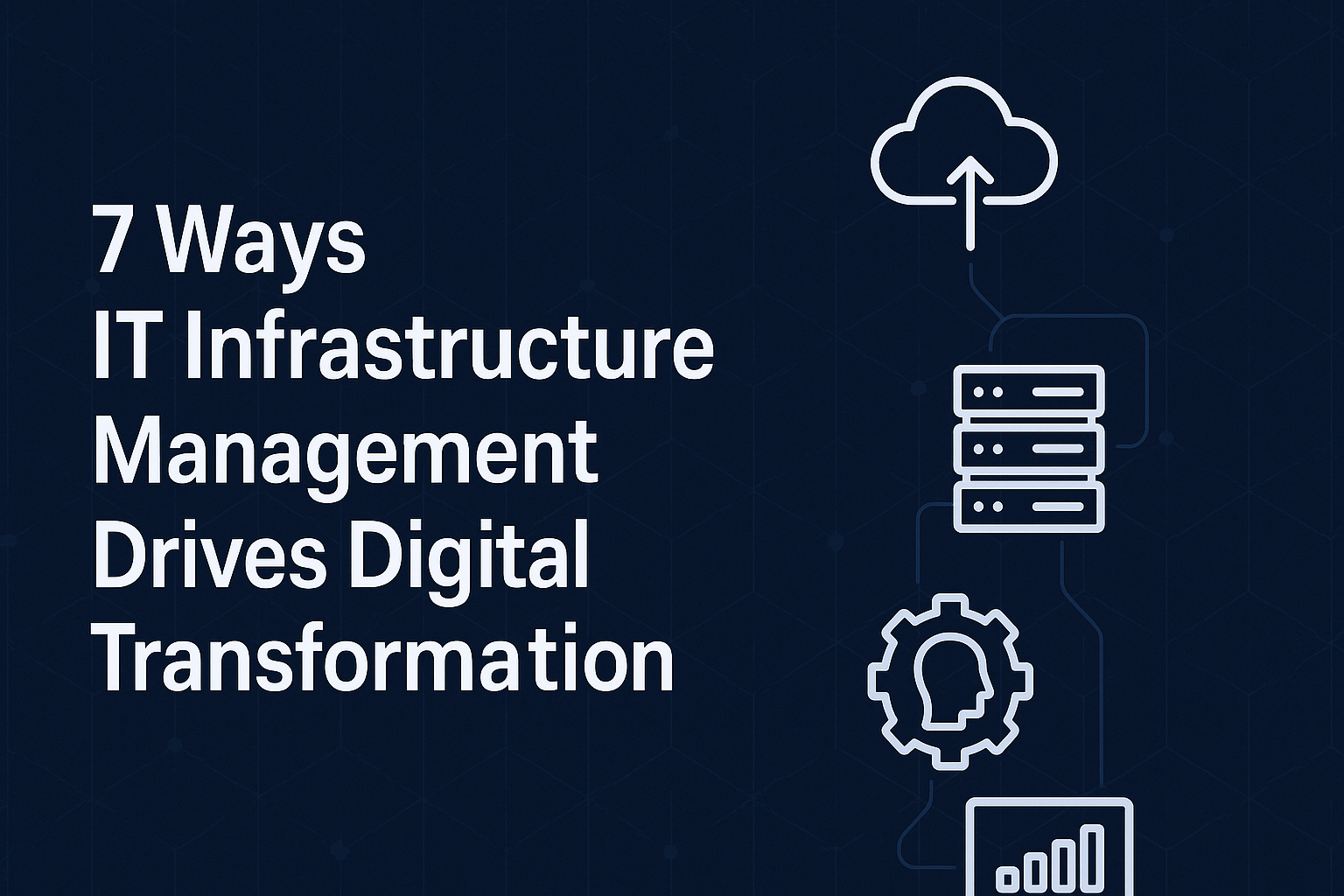Discover how System Integration Services enhance enterprise efficiency by reducing silos, automating workflows, and improving data flow for seamless business operations.
Introduction to System Integration Services
In today’s fast-paced digital world, organizations rely on multiple systems—ERP, CRM, HR, finance, marketing automation, and more. When these systems operate in isolation, inefficiencies and communication gaps emerge. That’s where System Integration Services come in.
These services help unify different applications and platforms into a single, interconnected ecosystem. As a result, enterprises can operate more efficiently, improve collaboration, and make informed decisions faster.
What Are System Integration Services?
System Integration Services involve linking various IT systems, software, and applications—both on-premises and in the cloud—into one coordinated infrastructure. This ensures seamless data exchange and interoperability across departments.
For example, integrating a company’s CRM and ERP systems allows sales teams to access inventory and financial data in real-time, enhancing responsiveness and accuracy.
Importance of Integration in Modern Enterprises
Modern enterprises handle vast amounts of data daily. Without integration, this data becomes fragmented, leading to duplication, inconsistencies, and delayed decision-making. Integration ensures that all systems “talk” to each other, enabling streamlined operations and data-driven growth.
The Growing Need for Seamless Integration in Businesses
Common Challenges of Disconnected Systems
-
Data duplication and inconsistencies
-
Inefficient workflows due to manual data transfers
-
Lack of real-time visibility into operations
-
Difficulty in scaling systems or adopting new technologies
Disconnected systems can drain productivity and revenue. A fully integrated IT ecosystem eliminates these issues, enabling employees to focus on value-driven tasks.
How Integration Enhances Productivity and Collaboration
When systems are integrated, teams can collaborate across departments effortlessly. For instance, marketing teams can instantly access customer purchase histories from sales data, helping tailor personalized campaigns. Integration bridges communication gaps and fosters synergy across all levels.
Core Benefits of System Integration Services
1. Eliminating Data Silos Across Departments
Integration breaks down barriers between departments. Data silos hinder collaboration and decision-making, but integrated systems ensure everyone works from a single source of truth.
2. Streamlining Business Workflows
By automating routine processes—like data entry or report generation—System Integration Services free up employee time and reduce human error. This enhances workflow efficiency and speeds up project timelines.
3. Enhancing Real-Time Decision Making
Real-time data integration enables leaders to make quick, informed decisions. Dashboards that pull live data from integrated systems offer insights into performance metrics instantly.
4. Improving Customer Experience and Retention
Customers today expect fast and personalized service. Integration allows customer support teams to access relevant data instantly, resolving issues faster and improving satisfaction.
5. Strengthening Security and Compliance
Modern integration solutions include centralized monitoring and governance tools that enhance data security and compliance. They ensure sensitive information is managed and shared responsibly.
6. Enabling Scalability and Flexibility
Integrated systems can easily adapt to business growth. As new technologies emerge, integrated architectures can seamlessly incorporate them, ensuring long-term scalability.
Key Components of Effective System Integration
APIs and Middleware as Integration Bridges
APIs (Application Programming Interfaces) and middleware play a crucial role in connecting applications. They facilitate smooth communication between different systems without altering their core functions.
Role of Cloud Platforms in Integration
Cloud-based integration enables businesses to connect both on-premises and cloud applications. Platforms like AWS, Azure, and Google Cloud provide tools to manage integration securely and efficiently.
Leveraging AI and Automation for Smarter Systems
AI-powered integration helps detect anomalies, predict issues, and automate repetitive tasks—making operations more intelligent and self-sufficient.
Best Practices for Successful System Integration Implementation
Defining Clear Business Objectives
Before starting an integration project, enterprises must define goals—such as improving data accuracy, reducing costs, or enhancing customer satisfaction.
Choosing the Right System Integration Partner
Selecting a partner with deep technical expertise, proven methodologies, and domain experience is critical. For example, firms like Innova India specialize in end-to-end integration tailored to specific industries.
Ensuring Data Governance and Quality Assurance
Maintaining data quality and compliance should be a continuous process. Establish policies to ensure data accuracy, security, and consistency across all systems.
Real-World Example: How System Integration Drives Enterprise Efficiency
Case Study: Integrated ERP and CRM for Better Data Flow
A manufacturing enterprise integrated its ERP with a CRM platform to unify customer and production data. The result: a 40% reduction in manual data entry, 25% faster sales cycle, and improved forecasting accuracy.
Lessons Learned and Key Takeaways
-
Clearly define integration goals from the start.
-
Choose scalable solutions that align with long-term objectives.
-
Invest in employee training and change management.
Future Trends in System Integration Services
AI-Driven Integration and Intelligent Automation
AI will continue to redefine integration by predicting failures, automating corrections, and enabling smart analytics.
Cloud-Native and Hybrid Integration Models
As hybrid work models evolve, cloud-native integration ensures secure, flexible, and continuous data flow across all environments.
Rise of IoT and Edge Integration Solutions
IoT devices generate vast data streams. Integrating these with enterprise systems enables real-time monitoring and advanced analytics for predictive maintenance.
Conclusion: The Future of Enterprise Efficiency Through Integration
In a digital-first era, System Integration Services are no longer optional—they’re essential. They reduce operational silos, enhance collaboration, improve decision-making, and drive innovation.
By adopting integrated systems, enterprises position themselves for sustained growth, agility, and a competitive edge in the evolving business landscape.
Frequently Asked Questions (FAQs)
1. What are System Integration Services?
They involve connecting diverse software and hardware systems to function as a unified environment for better efficiency.
2. How do they improve enterprise efficiency?
They automate workflows, reduce redundancy, and provide real-time insights across departments.
3. What industries benefit the most?
Manufacturing, healthcare, retail, finance, and logistics benefit greatly from integrated systems.
4. Are System Integration Services secure?
Yes. With proper encryption, authentication, and compliance measures, integrations remain secure.
5. How long does integration take?
The duration varies depending on the number of systems and complexity, typically ranging from weeks to several months.
6. How can I choose the right integration partner?
Look for partners with a proven track record, domain expertise, and post-deployment support—like Innova India.

